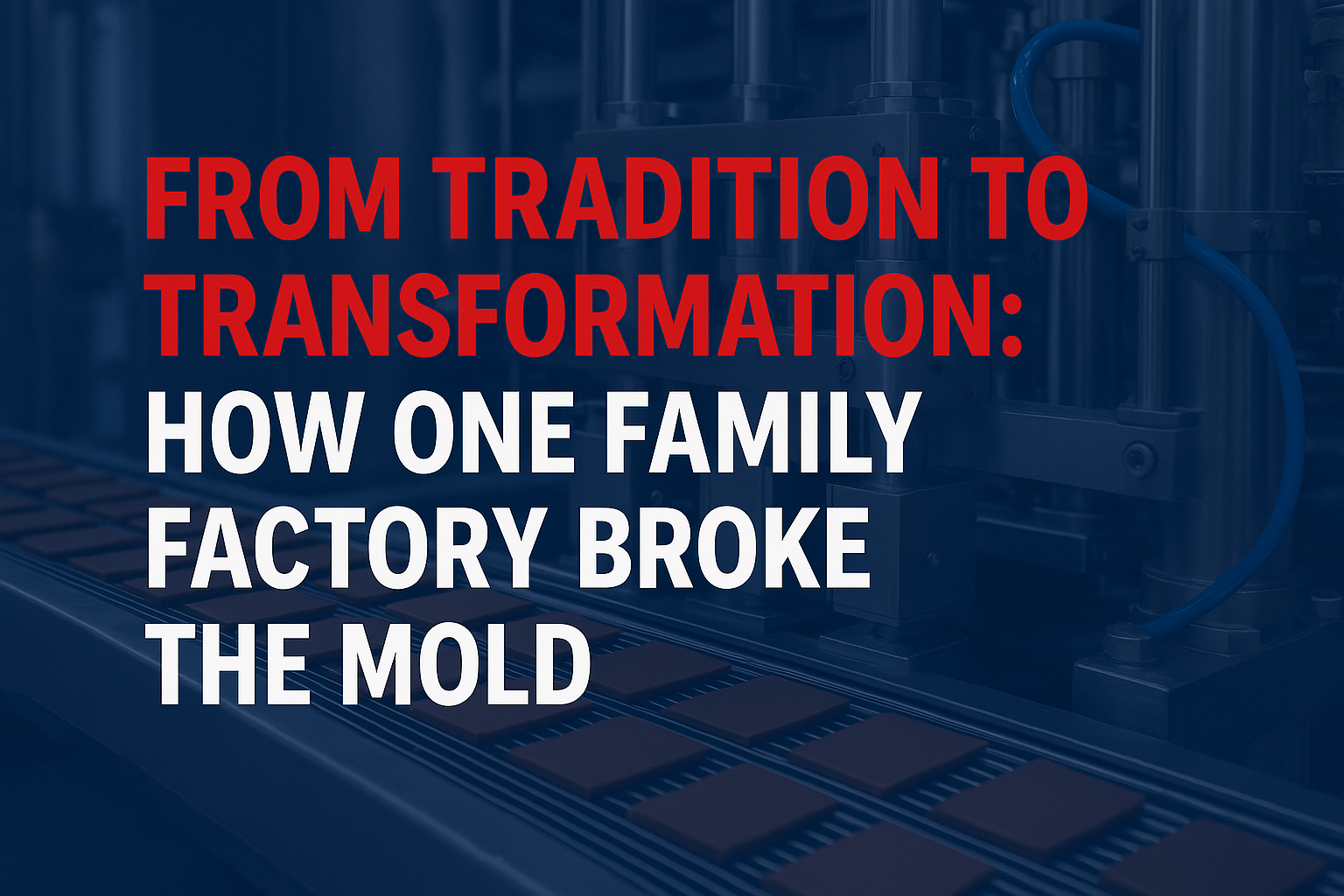The Constraint at the Core
A Parable for India’s Family-Owned Manufacturers
It began with a factory—a proud one—tucked away in Gujarat.
Generations had walked its floor. The machines bore the names of fathers and sons who had run them. The boardroom was still painted the same green as it had been in 1987, when the founder signed his first export order.
But something had changed.
Sales were decent. The workers were loyal. Yet, the founder, Mr. Sinha, felt uneasy. His grandson—fresh from a global MBA—kept asking questions that made him squirm.
- “Why don’t we have clear performance metrics?”
- “Why are we always rushing to fix things?”
- “Why do all decisions still come through you?”
Mr. Sinha didn’t know what to say. He had built this factory from scratch. Brick by brick. But he could see it now: the very strengths that once gave them an edge were turning into bottlenecks.
The Constraint Wasn’t in the Machines—It Was in the Mindset
What Mr. Sinha was experiencing was not a mechanical failure, nor a market downturn. It was a systemic constraint—the outdated assumptions that had governed his business for decades.
Like many Indian family-owned businesses, his factory was built on:
- Intuition, not insight
- Loyalty, not capability
- Control, not trust
- Jugaad, not governance
In the language of systems thinking, the factory’s throughput was throttled not by physical limitations, but by the mental model of management.
And as Dr. Goldratt often said: “Any improvement not made at the constraint is an illusion.”
The Clock Is Ticking
India now stands at the brink of a $1 trillion manufacturing opportunity. However, to achieve this, family-led businesses must confront their most profound constraint: resistance to change.
Not just changing a process here or a vendor there. But changing how they think.
So Mr. Sinha and his grandson made a decision—not to install another ERP, not to hire more salespeople, but to change the rules of the game.
They mapped out six bold shifts:
SHIFT 1: From Founder’s Gut to Institutional Governance
Constraint: Decisions stalled at the top.
Breakthrough: Built a board with external advisors. Created a strategy council.
Timeline: 12 months
Outcome: Faster decisions. Fewer bottlenecks. Greater investor trust.
SHIFT 2: From Central Control to Leadership Depth
Constraint: Nobody below the founder took initiative.
Breakthrough: Delegated with dashboards. SOPs replaced phone calls. Next-gen coached, not coddled.
Timeline: 6–18 months
Outcome: The plant could now function without the founder on speed dial.
SHIFT 3: From Legacy Habits to Process Excellence
Constraint: Chaos disguised as tradition.
Breakthrough: Introduced daily kaizen. Visual dashboards replaced Excel. Safety SOPs are finally enforced.
Timeline: 12 months
Outcome: Customer complaints are down, audits are passed, and morale is up.
SHIFT 4: From Product Obsession to Market-Led Design
Constraint: Sales pushed what the factory made, not what the market needed.
Breakthrough: Linked customer feedback to R&D. Started co-creating with clients.
Timeline: 6–18 months
Outcome: Higher pricing power. Fewer reworks. Greater brand recall.
SHIFT 5: From Tech-as-Fashion to Smart Modernization
Constraint: Shiny tech with no ROI.
Breakthrough: Pilots with real payback—predictive maintenance, inventory visibility, digital twins.
Timeline: Start in 6 months
Outcome: Tech that saved money, not just made noise.
SHIFT 6: From Local Jugaad to Global-Grade Compliance
Constraint: “This is how we’ve always done it.”
Breakthrough: ESG audits. Traceability. Worker rights. Third-party certifications.
Timeline: 0–24 months
Outcome: Passed EU customer audit and gained access to new global markets.
The Simple Truth of Throughput
In Mr. Sinha’s case, the constraint was not his people. It was not his plant. It was his refusal to modernize his model. Once he confronted that truth, everything else—strategy, systems, even succession—began to fall into place.
The National Constraint
What Mr. Sinha fixed at his factory, India must now fix at scale. India’s industrial growth is throttled by:
- Policy that rewards loans, not learning
- Incentives that favor volume, not value
- Programs that support production, not professionalism
If we are to lead the world, we must unclog the system, factory by factory, mind by mind.
The Final Warning—and the Greater Hope
India’s family-run factories are our greatest untapped asset. But unless they break the constraint of the past, they will become its casualty. The next three years will determine whether we seize the manufacturing century—or sit on its sidelines.
The clock is ticking.



